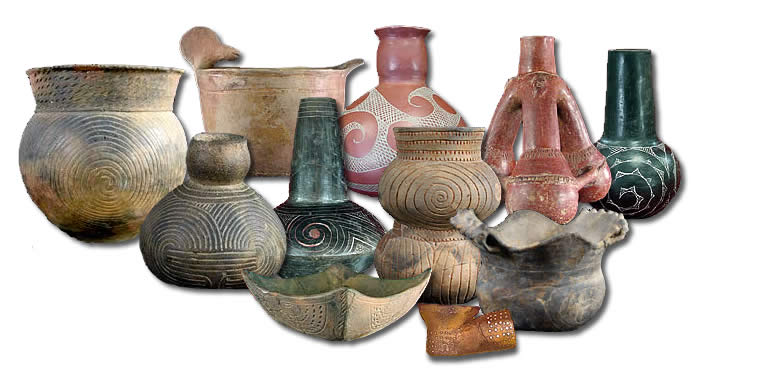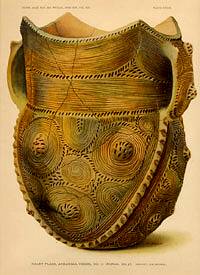The Caddo Pottery Tradition

For a thousand years Caddo women made the finest pottery east of the Rockies. While many other groups in the Eastern Woodlands made serviceable vessels and a few created extraordinary pottery objects, none equaled the Caddo in terms of variety, quality, and artistic expression. As ethnologist John Swanton put it:
In Caddo ceramics the art of the Southeast easily reached its apex, for while there are specimens of pottery from the Middle Mississippi region and Moundville which show as high technical excellence, there are none that, upon the whole, exhibit equal artistic feeling.
|
This exhibit describes the Caddo pottery tradition, illustrates many examples, and explains why Caddo pottery is so important for understanding early Caddo history. Simply put, without Caddo pottery there would be almost no way to trace Caddo history prior to the arrival of Europeans. But pots and potsherds (pottery fragments) represent more than mere relics of the past. Properly studied, pottery can give us insight into the lives, values, and beliefs of over 75 generations of Caddo ancestors. The Caddo created in clay all manner of containers, cooking pots, serving vessels, pipes, and ornaments, many of which truly are works of ceramic art that expressed how they saw the world as well as their feelings for departed loved ones. The Caddo Pottery Tradition section summarizes what we know about the ancient tradition. Reviving a Lost Tradition tells the story of how a modern Caddo woman, Jeri Redcorn, has brought the ancient tradition back to life. Making Caddo Pottery explains the basic techniques and illustrates these with close up photographs of ancient and modern examples. The Pottery Galleries present showcases of ancient and modern Caddo pottery—stunning photographs that you can rotate 360 degrees. Learn where to turn to for more by following the leads in the Credits and Sources section. |

Illustration of a Haley Complicated-Incised jar
excavated in 1911 by C.B. Moore from a grave at the Haley Place,
Miller County, Arkansas. The drawing and watercolor painting was
one of the featured color plates in Moore's 1912 report, Some
Aboriginal Sites on Red River.
|